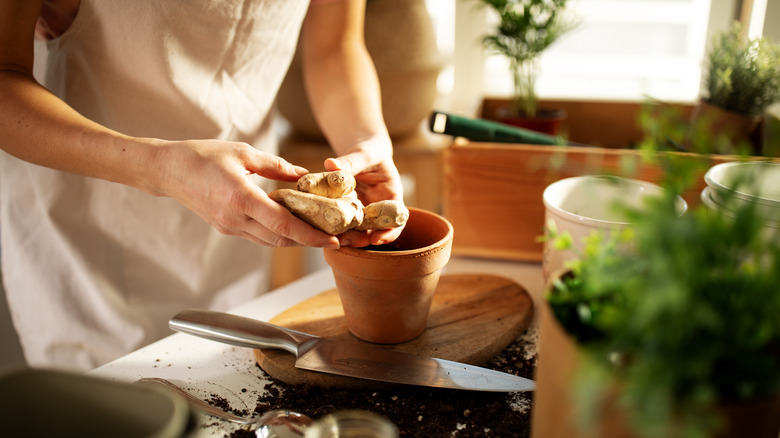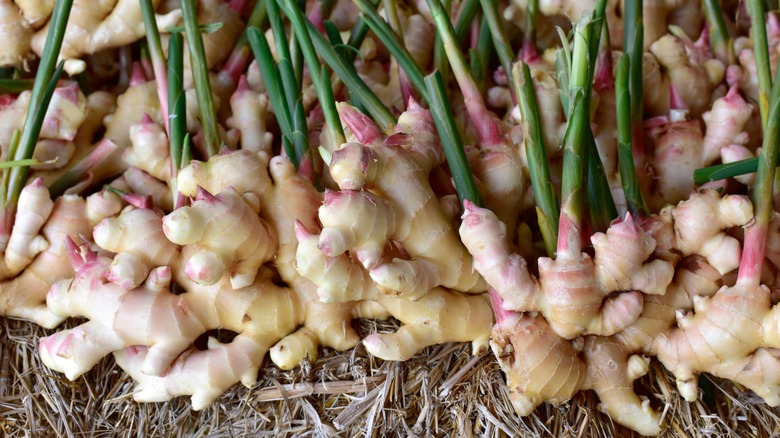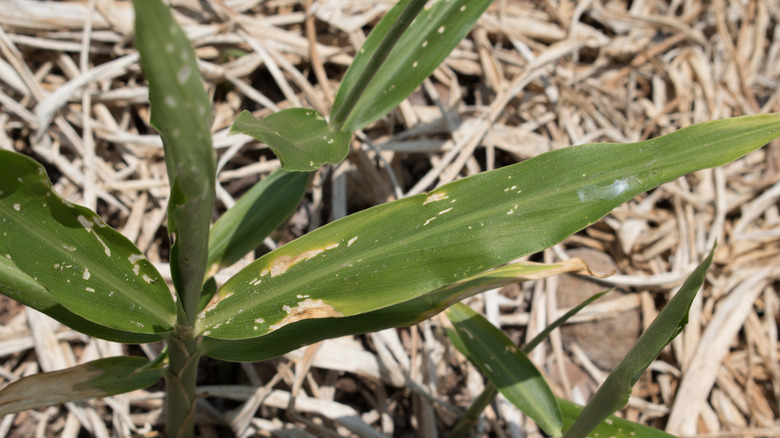Common Mistakes Everyone Makes When Growing Ginger
Ginger is a mighty culinary ingredient for both savory and sweet foods. No wonder it's becoming an increasingly popular plant among home gardeners. While growing it is very rewarding, it can also be quite challenging, especially for novices. Whether you're attempting to nurture your ginger indoors or out, several common mistakes can impede the growth and health of your plants.
Before diving into container and environmental issues, it's crucial to address the very beginning of the ginger-growing process. Always choose a fresh, plump rhizome from a reputable source. The root should be smooth, with several nodes, and thin, lightly colored skin. Old or shriveled rhizomes might not sprout, and it's essential to ensure they haven't been treated with growth inhibitors, which are sometimes used on grocery store varieties to prevent sprouting.
One of the most common mistakes is confining the ginger plant to a cramped space. Ginger rhizomes spread out horizontally, so they require a wide area to grow. A container that's too small restricts the expansion of the ginger and can lead to stunted growth and poor yield. Ideally, select a container that's at least 8 to 12 inches deep and 12 to 14 inches in diameter for best results. Give the ginger some room!
Water, sun, and patience for a perfect harvest
Ginger thrives in moist (but not waterlogged) soil. Overwatering your plants can lead to root rot, while underwatering can cause the ginger to dry out and hinder its growth. It's a fine balance that requires regular attention. Make sure to water the plant consistently, keeping the soil damp, and ensure that your container has adequate drainage holes to prevent water accumulation.
While ginger does enjoy sunlight, it doesn't need direct sun all day. Too much direct sunlight can scorch the leaves and stress the plant. Conversely, insufficient light can result in leggy growth. The ideal condition is partial sunlight, like a spot with morning sun and afternoon shade. Because ginger is a tropical plant, it thrives in warm conditions. If you live in a region with cooler temperatures, it might be better to grow your ginger indoors or in a greenhouse. The plant will struggle and might not even sprout if exposed to temperatures below 50 degrees Fahrenheit.
Many gardeners are either too eager or too cautious when it comes to harvesting their ginger. Harvesting too early means you'll miss out on the full growth potential, while waiting too long might result in overly mature ginger that's fibrous and less flavorful. Neither is desirable. A good rule of thumb is to wait at least 8 to 10 months from planting before considering harvesting. The leaves will usually start to die back, indicating that it's time to reap the benefits of your patience.
Ginger growing challenges: soil and pests
According to an agricultural study by the University of Hawaii, ginger prefers rich, loamy soil that's well-aerated with a slightly acidic pH between 5.5 and 6.5. Using heavy, clayey soil or not enriching your soil with organic compost can restrict the growth of the rhizomes — the soil should be loose with good drainage, not tight. Before planting, it's a good idea to mix in well-decomposed compost or rotted manure to boost the soil's fertility and improve its texture.
Don't let ginger's hardy appearance deceive you — unfortunately, it's not immune to pests and diseases. Common culprits include rhizome scales, root-knot nematodes, and fungal infections. Regularly inspect your plant for signs of distress, such as yellowing leaves or spots — these could be signs of a nutritional deficiency, a pest, or some kind of infection. If you identify a problem early on, it's easier to address and prevents it from escalating.
By being aware of these common mistakes and taking the key steps to avoid them, you can pave the way for a bountiful ginger harvest — in due time, of course. Whether you're growing this spicy root for culinary uses (spicy masala chai, gingerbread, curry, and the list goes on), medicinal purposes, or simply the joy of gardening, ensuring you give your ginger the best environment to thrive will undoubtedly yield the best results.


